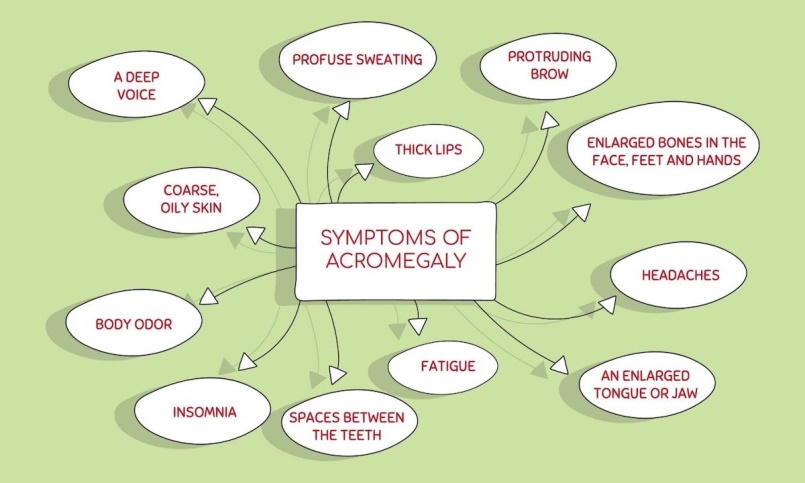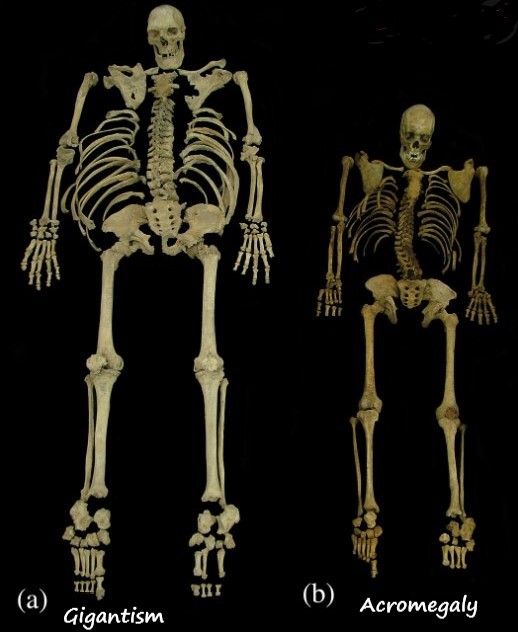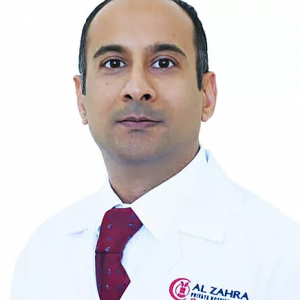Acromegaly
Acromegaly is a medical condition arising from the pituitary gland’s excess production of growth hormone (GH). An excess of GH can cause growth problems in bones and soft tissue. Read More
Top Doctors For Acromegaly Treatments
Top Hospitals For Acromegaly Treatments
Acromegaly
Table of contents
What is Acromegaly?
Acromegaly is a medical condition arising from the pituitary gland’s excess production of growth hormone (GH). An excess of GH can cause growth problems in bones and soft tissue.
People who suffer from this disorder usually experience sudden weight gain and an extraordinary enlargement of their bones and soft tissues, especially around their hand, leg, and face regions. This increase is due to the excess growth hormone produced in their bodies. Acromegaly is a rare condition and usually affects middle-aged adults.
About three to four people out of every 1 million people develop acromegaly every year, and around 60 out of every 1 million people have the condition at one time. These statistics may be underestimated since most cases of acromegaly are often undiagnosed.

Types of Acromegaly
There are no types of acromegaly. However, acromegaly is a type of disorder resulting from excess growth hormone production in adults (people who have passed the age of growing in height). In children, however, the excess production of GH causes an abnormal increase in height, referred to as gigantism.
Causes
Acromegaly is caused by the overproduction of growth hormone (GH) by the pituitary gland.
The pituitary gland is a small gland located in the brain which produces some hormones. The major function of the growth hormone is to manage and regulate physical growth.
When much GH is produced, excessive amounts of a hormone called insulin-like growth factor-I (IGF-I) are produced by the liver, which in turn stimulates the growth of bones and other tissues and results in acromegaly and gigantism.
The causes of acromegaly are mostly the presence of benign (noncancerous) tumors in the brain or other parts of the body. These tumors may be pituitary or non-pituitary hormones.
- Pituitary tumors: In pituitary tumors or adenomas, the tumor mass compresses the nearby brain tissues, producing excessive amounts of growth hormone and leading to acromegaly.
- Non-pituitary tumors: In a few people with acromegaly, tumors in other parts of the body, such as the lungs or pancreas, cause the disorder. Sometimes, these tumors secrete excess GH. In other cases, the tumor produces a hormone called growth hormone-releasing hormone (GH-RH), which stimulates the pituitary gland to produce more.
Symptoms

For most people with acromegaly, detection usually takes longer due to the slow unfolding nature of the sickness. In most cases, the enlargement of their affected body parts happens slowly, while other symptoms become obvious after a long time. However, these are signs to look out for:
- Enlargement of face, feet, and hands
- Weight gain
- Spaced dentition
- Hair growing excessively in women
- Enlargement of jaw or tongue
- Headaches and fatigue
- Brow becoming more prominent
- Splaying fingers and toes
- Developing body odor
- Increase in sweating
- Growth spurts become excessive
- Voice becoming deeper and hoarse
- Insomnia or inability to sleep
- Swelling and pain in joints
- Weakening muscles
- Enlarged pores in the skin
- Thickened skin
How is acromegaly diagnosed?

When a doctor suspects a person has acromegaly, he may order one or more of the following in order to confirm the diagnosis:
- Blood Tests: Blood tests are used to discover if a patient has too much GH. However, they can sometimes be inaccurate because GH levels fluctuate throughout the day.
- Glucose Tolerance Test: This reveals if a person’s body can suppress GH levels or not. During this test, the patient is advised to drink around 75 to 100 grams of glucose before the GH levels are tested. If the person’s body is secreting normal levels of GH, excess glucose will cause the body to suppress the GH levels. If not, it will still show high GH levels, which indicates acromegaly.
- Insulin-Like Growth Factor 1 (IGF-1: IGF- A test for a protein called insulin-like growth factor 1 (IGF-1). This testing is usually conducted to determine levels of IGF-1 and show if there is an abnormal growth in the body. It is also used to monitor the progress of other hormone treatments.
- Imaging Studies: X-rays, MRIs, and CT scans are often used to check the internal components of the body. For patients with acromegaly, doctors look out for pituitary or non-pituitary tumors capable of causing the release of excess growth hormone. MRI and CT scans help find the pituitary tumor and determine its size. , The doctor also looks for tumors in the abdominal, chest, or pelvic region capable of causing excess GH production. X-rays and DEXA (DXA) scan is done to check bone health.
How is acromegaly treated?
Treatments for acromegaly are aimed at returning GH production levels to normal, maintaining the normal pituitary function, relieving the pressure around growing tumors, and treating hormonal deficiencies associated with the disorder.
They include the following:
Surgery
Surgery is a quick and effective way to reduce growth hormone levels and is recommended for people with acromegaly. It involves the removal of the tumor causing excess GH, thus, resulting in the relief of acromegaly symptoms in the patient.
However, where complication arises, the pituitary tissues surrounding the tumor could be damaged. This will eventually require lifelong pituitary hormone replacement treatment. On rare occasions, cerebrospinal fluid leaks and meningitis emerge, which can be life-threatening and require an urgent medical response.
Medication
Medication can either be used to shrink large tumors before surgery or treat the condition, where the surgery to reduce GH levels is unsuccessful. These medications serve as GH production blockers or regulators.
They include:
- GH receptor antagonists- Medications such as pegvisomant block the effect of GH on the body’s tissue.
- Somatostatin analogs- They include octreotide and lanreotide. These drugs help in producing less GH levels and also help in reducing the size of the pituitary tumors.
- Dopamine agonists- Oral medications, including cabergoline and bromocriptine, help in decreasing the levels of GH and IGF-1. These drugs are generally given in high doses, which can result in an increase in the risk of side effects [1].
Radiation Therapy
The types of radiation therapy include:
a) Conventional radiation therapy
b) Stereotactic radiotherapy
What are the risk factors and complications associated with acromegaly?
If left untreated, acromegaly can lead to more severe health conditions or complications, such as the following:
- Osteoarthritis can cause stiffness and pain in the joints.
- Hypertension (high blood pressure), where a person’s blood pressure becomes higher than normal.
- Cardiomyopathy; is a cardiovascular disease that results in the enlargement of the heart.
- Diabetes mellitus, where the body can’t use glucose (a type of sugar) normally.
- Goiter is characterized by the enlargement of the thyroid gland.
- Precancerous growths (polyps) on the lining of the colon.
- Hypopituitarism, which causes a reduction in the release of pituitary hormones,
- Sleep apnea, a condition in which breathing repeatedly stops and starts during sleep.
- Carpal tunnel syndrome, which causes pain, numbness, and tingling in the arm and hand, is a common condition.
FAQ
Though both acromegaly and gigantism are growth disorders resulting from the excess production of growth hormone (GH), acromegaly only occurs in adults (people who have passed the age of growing in height). It results in the enlargement of the bones and tissues of some parts of the body, while gigantism occurs in children and majorly results in the excessive increase in height and some parts of the body. 
Picture Courtesy: onlinelibrary
Acromegaly, chronic excess of growth hormones (GH) with insulin-like growth factor -1 (IGF-1), leads to the development of acromegalic cardiomyopathy resulting in systolic dysfunction and congestive heart failure.
If left untreated, it may lead to various complications. The most complications include joint problems, pituitary hormone deficiency, and respiratory problems.
Acromegaly is an uncommon, chronic disease characterized by hypersecretion of pituitary growth hormone (GH) by somatotroph adenomas, along with increased levels of insulin-like growth factor -1 (IGF-1)
Life expectancy may be reduced by approximately 10 years, especially when the growth hormone levels are uncontrolled and diabetics and heart disease are present.
Acromegaly is a rare condition. Approximately 3 to 14 of every 1,00,000 people have been diagnosed with this condition. The incidence is very less compared to other conditions [2].
No, unfortunately, this condition cannot be prevented. No one knows the exact cause of this condition. However, in most cases, it is caused due to genetic mutation or due to pituitary tumors. Research studies have been carried out to learn more about this condition.
In most cases, it can be cured. The cure rate after the surgical removal of the pituitary tumors causing acromegaly is about 85% for small tumors and 40 to 50% for large tumors [3].
References
- https://www.mayoclinic.org/diseases-conditions/acromegaly/diagnosis-treatment/drc-20351226
- https://my.clevelandclinic.org/health/diseases/17743-acromegaly
- https://my.clevelandclinic.org/health/diseases/17743-acromegaly

























































